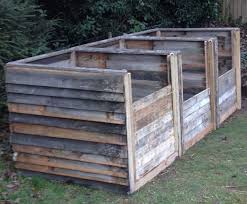In today’s environmentally conscious world we have to ask how sustainable is the site? With over 40,000 plots and some 741 sites in London and some 300,000 plots across the UK the ability for allotments to raise the bar on environment is very real. This is one of series of opportunities to be covered over the coming days and hope that in doing so we stimulate discussion and maybe even action.
4.
Compost and Soil
Do you and the rest of your site compost all green waste?
Do you create leaf mould?
Do you mulch crops?
Does every plot have compost bins on each plot, and are holfers
trained on how to use them?
Do you buy compost which includes peat?
Do you have a wormery?
Soil and compost are the basic ingredient to any allotment
from sowing crops to achieving a bountiful harvest. We may have heavy clay soil,
chalk soil, sandy soil, but we all want to grow successfully and often the key
is down to soil improvement. Some create raised beds where they in effect
create the ideal mix, others add material to compensate for what they have. Achieving
the right soil mix is not luck and takes constant work. Also, we take nutrients
out when we grow and harvest and these need to be replaced. Fertilizers alone
do not make a good soil, they are just one aspect of the equation.
Why do some plot holders not compost green waste and create
their own compost and nutrient rich additive? This is a question only they can answer.
Some may say it’s too much trouble and
easier to burn or bag and dump and effectively send to landfill. Others may say
seed heads and weeds prevent it being composted. The reality is that almost all
green matter can be composted and some household material too. It is a matter
of knowing how long and creating a living environment for the underworld of
creatures to transform and break down waste and create compost.
Basic compost bins don’t cost much and can also be easily be
made with old pallets and are even often available from the local authority at
a very reasonable cost. There are more expensive bins that turn the compost
with little effort and hot bins that ensure the living environment is right for
alchemy.
Compost can be used all over the plot and mixed to provide the
right nutrients, fibre and living matter to support and enrich all soils. It
can make light sandy soil bulkier and help breakdown heavy clay soil. But many
will still rush to their local DIY store to buy multi-use compost by the bag
load instead. Maybe they need the extra quantity or something more constant in
the mix but it comes at a huge price.
Those sacks of compost which offer a good deal (3 x 60 ltr
bags for £10) often have high percentage of peat in them. Yes, peat is being
gradually reduced and sometimes they can be misleading in their claims but peat
extraction and its removal from the wetlands, bogs etc has a major impact on
the environment. Even some of the more expensive compost contains peat and it’s
time to say, ‘no thank you.’
Coir is heralded as the next best thing to peat but is this
true and if we all suddenly went coir would the impact be similar to palm oil
and soya?
The question is whether our grandparents had access to coir
or peat or did they merely compost and make their own?
I always remember my grandad kept a bucket and shovel handy
and at the sight of a horse and cart was out shovelling up the muck he called
‘gardener’s gold’. Today we don’t have the same traffic and even collecting
from a stable has changed. Yesterday’s straw has been replaced by wood
chippings which break down into a kind of sand. The nutrients are still there
but the mix consistency has changed. Also you need to be sure what chemicals
have been administered to the livestock and ensure it is well rotted before use.
Our Chinese and Vietnamese plot holders buy chicken manure
collectively in bulk. it must work given their crops, but frankly it stinks
when applied.
Today we are trying to negotiate with the local Council to
supply every plot with a compost bin and wormery which we will assign as part
of the plot’s inventory. Sounds simple and an easy model to adopt and support,
but even this takes time to achieve.
